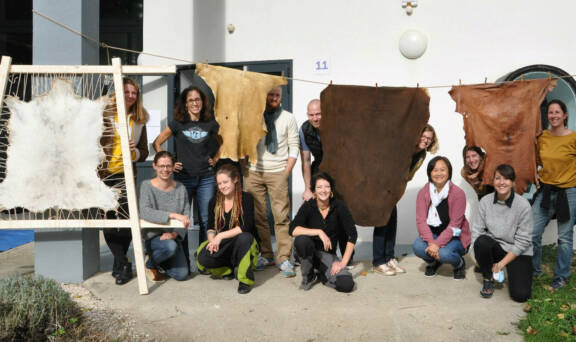Making the Object Speak
The purpose of the physicochemical analyses of the objects from the French Royal collections from North America is to shed further light on the historical, ethnological and anthropological information available. Indeed, identifying the materials can enable us to trace the origin and circulation of the substances used, and the transactions between the Native Americans and the Europeans in North America during their early contacts from the 16th to the 18th century. The presence of tool marks tells us about the production methods and technologies, while signs of wear are indications of how the objects were used.

The analysis of objects also helps us identify their movements. Traces of the past - residues of organic matter linked with the object's use, or remains of conservation treatments - indicate the object’s life before and after it entered museum collections. This information also helps conservation specialists choose appropriate restoration techniques, and make recommendations on preservation methods for the object.
Some Specific Questions
The collection studied by CRoyAN researchers contains a large variety of object types, of very different materials, all of which have been transformed to a greater or lesser degree: hides have been tanned to make clothes or moccasins, porcupine quills have been dyed, deer hair or feathers have been used for embroidery, woven vegetable and animal fibres form the basis of bags and carrying straps, boxes and containers have been constructed from birch bark, shells and metal alloys have been transformed into beads, paints have been added for decoration, and so forth.
In order to understand how these objects were manufactured, the Conservation-Restoration Unit of the musée du quai Branly-Jacques Chirac carries out morphological and physicochemical analyses, together with the CRoyAN project’s external partners, the Centre de Recherche sur la Conservation, the Muséum national d’histoire naturelle, and MONARIS laboratory with the financial support of the Fondation des Sciences du Patrimoine.

This pair of moccasins (71.1878.32.137.1-2) shows a particular dark preparation, which appears to be corrosive to the hide, and might explain their present rigidity.
© musée du quai Branly - Jacques Chirac, photo Patrick Gries, Valérie Torre
As in all research into museum collections, specific questions are asked. The first concerns the most commonly used material in the corpus, hides: from what animal species do they come, how were they prepared (the tanning process), and how well-preserved are they? The second concerns the nature of the coloring materials - mineral pigments and organic dyes - in order to get a better understanding of how they were used, and to distinguish the dyes that were sourced locally, from the ones that were traded with the Europeans. The third is an issue for preventive conservation, namely assessing the object’s sensitivity to light, and hence its optimum lighting conditions when exhibited in a museum space.
What Types of Analyses?
When dealing with cultural heritage artifacts, non-invasive and non-destructive methods are privileged, since they do not require taking samples, and are harmless to the objects. Therefore, a fully non-invasive methodology using portable instruments is implemented.
First, the objects are examined visually, sometimes with the assistance of sophisticated imaging techniques (high-magnification digital microscopes, UV light, etc). This can reveal subtle differences between hides, by which animal species can be identified, or define the weaving and embroidery techniques used with porcupine quills or deer hair.
Then, to characterize the object’s materials, the following non-invasive analytical techniques are employed: Fourier-transform infrared (FTIR), Raman, X-ray fluorescence (XRF), and visible and near-infrared reflectance (FORS) spectroscopies.

These analyses are conducted using portable instruments placed close to, or sometimes in contact with the object. The operating principle is quite the same for all the techniques: a radiation is emitted towards the object and interacts with the matter. As a result of the interaction, part of this radiation is re-emitted by the object, then detected and analysed. The data are then compared to specific databases to identify the materials. Sometimes it is necessary to use model samples as standards. These are made by experts familiar with recreating traditional methods. Where non-invasive methods yield only incomplete results, sampling for more complete analysis may become unavoidable, for instance using differential scanning calorimetry (DSC), the authoritative reference technique for measuring the stability of collagen in hides, and indicates their state of conservation.

Beyond the materials identification, another technique, called micro-fading tester (MFT) measures the light sensitivity of the objects. In other words, it predicts the way an object’s materials will react to light exposure. It helps defining the ideal lighting conditions in order to preserve the objects when exhibited.
You can read about these material analyses of the objects from the Royal North American Collections held in the quai Branly - Jacques Chirac Museum on this blog, as the research unfolds.
Contributors
Related Topics


























